63 Fun Facts about US National Parks
As you research US National Park vacation ideas, gaining a broader understanding of their history, geography, and distinct features can greatly enhance your experience. Here’s a list of fun facts about US National Parks to get you started.
Did you know that the National Park Service was established in 1916 by President Woodrow Wilson to protect the country’s 35 national parks and monuments? Since then, it’s grown exponentially, now overseeing 63 national parks spanning across various landscapes.
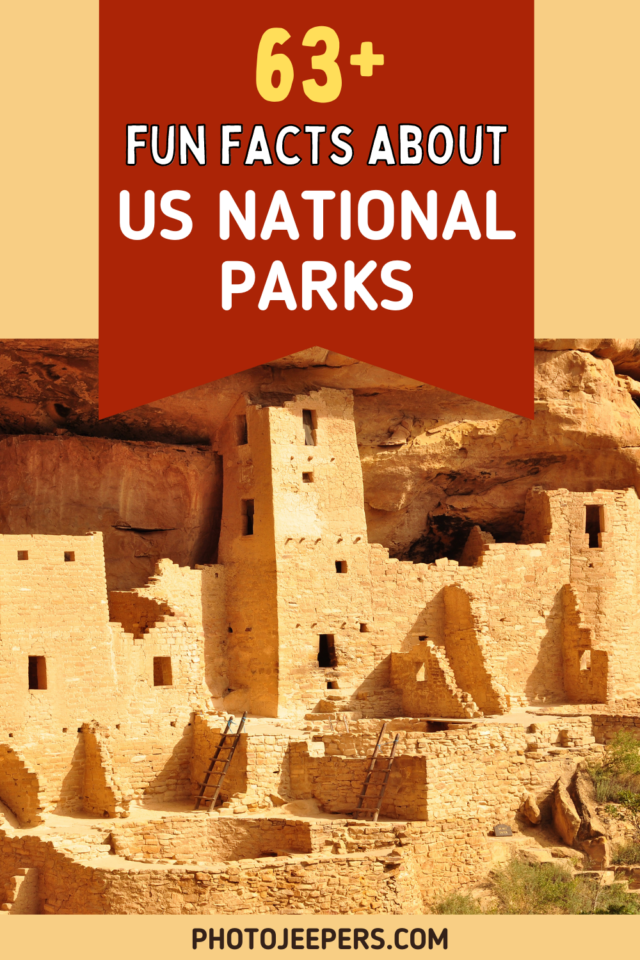
Visiting the US National Parks is an incredible experience, offering a unique blend of breathtaking natural beauty, outdoor adventure, and deep-rooted history.
Each park has its own story to tell, and they collectively comprise a rich tapestry of America’s natural and cultural heritage. So whether you’re a history buff, a nature lover, or just someone looking for a great vacation, the US National Park System has something for everyone.
If you enjoy travel trivia, you’ll love this list of fascinating facts about each of America’s National Parks! We’ve created a handy list of National Parks by state if that’s another fact you’re interested in knowing!
This site contains affiliate links which means WE may receive commissions for purchases made through these links. We only provide links to products we actually use and/or wholeheartedly recommend! As an Amazon Associate, we earn from qualifying purchases. Read the full Disclosure Policy.
US National Parks Resources
US National Parks Facts Activity Pack: Use this pack to document the history, important events, physical features, wildlife, and other interesting facts about all 63 parks!
US National Parks List of Reservations: America’s National Parks have become popular travel destinations. Due to the high visitation numbers, there are eight National Parks one National Monument that require a reservation: timed entry, road permit, and hiking permits.
US National Parks Pass: Learn about the park pass cost, how it saves money, and where you can buy the pass.
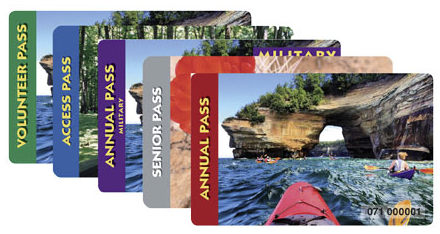
Fun Facts About US National Parks
Learn something new and interesting about the 63 National Parks in America. This USA National Park List is in alphabetical order
Acadia
Acadia was the first national park to be created east of the Mississippi River and is the only national park in the Northeast. There are 26 mountains in Acadia National Park. Acadia Mountain is on the only mountain ridge in the park that stretches east to west instead of north to south.
American Samoa
The National Park of American Samoa is the only U.S. national park south of the equator. The lowest elevation found in American Samoa is 0 feet at the South Pacific Ocean. The highest elevation found in American Samoa is 3,056 feet at Olamatimu.
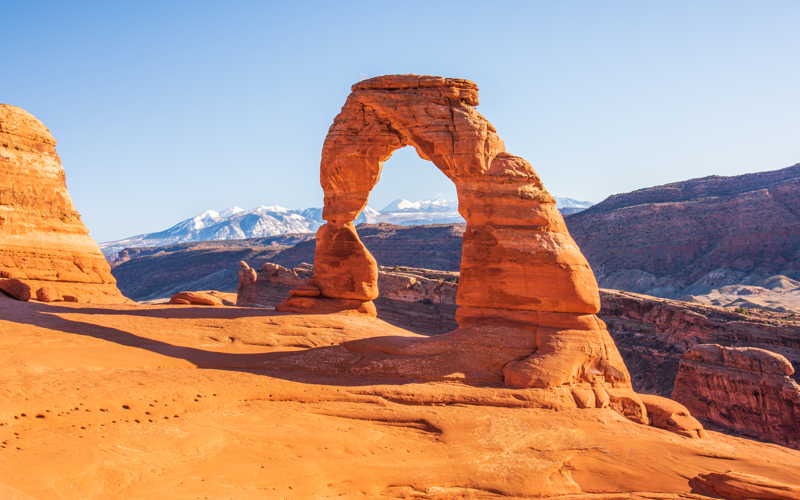
Arches
There are more than 2,000 natural sandstone arches inside the boundaries of Arches National Park. Landscape Arch is the largest and longest in North America, stretching 306 feet, the length of a football field. The big top rock at Balanced Rock is the size of 3 school buses! Check out more Arches National Park Facts!
Badlands
The name Badlands comes from the Lakota, who first called it “mako sica”, or “land that is bad”. The lack of water, bizarre topography, and extreme temperatures in the Badlands National Park area were the likely reasons. In more modern geologic terms, “badlands” are simply an area of soft rock heavily eroded in an overall dry climate.
Big Bend
Floating the Rio Grande River, especially through Santa Elena Canyon, is a popular activity. Since the international border is officially in the middle of the river, these river excursions at Big Bend National Park are treated as international trips by authorities, and proper documentation (i.e. a passport) is required.
Biscayne
95% of Biscayne National Park‘s 173,000 acres are underwater. Other than the Convoy Point area near the visitor center, a boat is needed to access the park. Biscayne Bay is generally a very shallow sea, with an average depth of only 10 feet.
Black Canyon of the Gunnison
Some parts of the canyon receive so little sunlight that they look black, hence the very literal name “Black Canyon of the Gunnison”. The canyon is so narrow and so deep that sunlight only barely reaches parts of the gorge each day, about 33 minutes total.
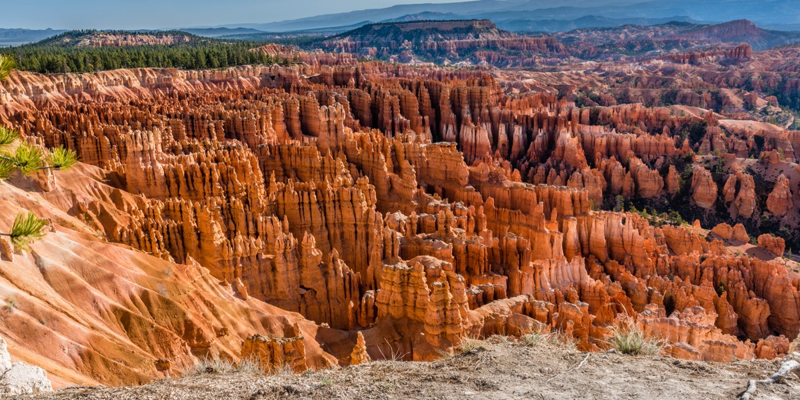
Bryce Canyon
The Bryce Canyon National Park facts are all about geology. For millions of years water has carved Bryce’s rugged landscape. In about 50 years the present rim will be cut back another foot (30 centimeters). The erosional force at Bryce Canyon National Park consists of frost-wedging and the dissolving power of rainwater to shape the colorful limestone rock into bizarre formations including slot canyons, windows, fins, and spires called “hoodoos.”
Canyonlands
The famous ending scene of 1991 “Thelma & Louise” was filmed above the Colorado River in Canyonlands National Park. “127 Hours,” starring James Franco, tells the story of Aron Ralston who got stuck in a slot canyon in the Maze District and had to self- amputate his arm to get free.
Capitol Reef
One unexpected feature that you wouldn’t expect to find in a national park is the Fruita Orchards. Planted by Mormon pioneers who settled in the region, these orchards are now open to the public. During harvest seasons at Capitol Reef National Park, you can even pick and eat the fruit, and take some home with you for a small fee.
Carlsbad Caverns
At present there are 117 known caves in the park. The Big Room in Carlsbad Caverns, at 8.2 acres, is the largest accessible cave chamber in North America. The caves in Carlsbad Caverns National Park are 56°F throughout the year, with high humidity.
Channel Islands
Channel Islands National Park encompasses five remarkable islands and their ocean environment. Isolation over thousands of years has created unique animals, plants, and archeological resources found nowhere else on Earth. There are only three mammals that are native to the islands: deer mouse, spotted skunk, and the Channel Islands fox.
Congaree
Congaree National Park has the largest old-growth bottomland hardwood forest in the U.S. But the coolest event happens between the end of May and the start of June – thousands of fireflies simultaneously light up each night at exactly the same time for a magical natural show!
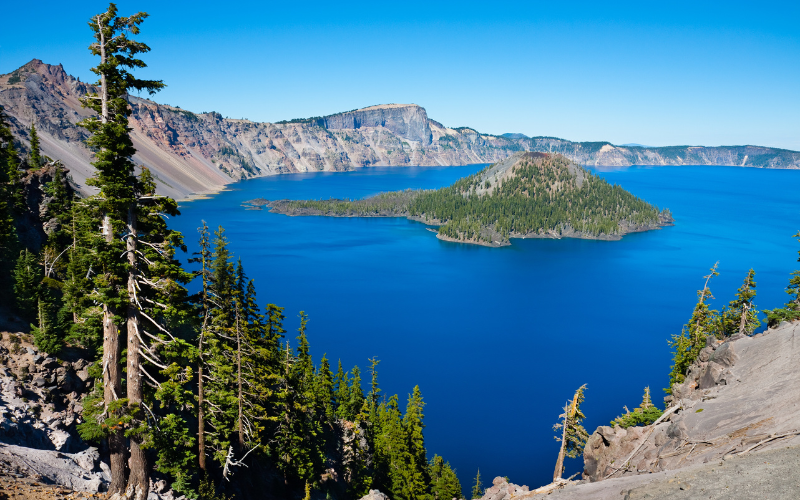
Crater Lake
Crater Lake was formed by the fall of a volcano. At 1,943 feet deep, Crater Lake is the deepest lake in America. Famous for its beautiful blue color, the lake’s water comes directly from snow or rain, there are no inlets from other water sources.
Cuyahoga Valley
The 308-mile long waterway, the Ohio and Erie Canal, runs through the park and was dug by hand. Most of the workers were Irish and German immigrants. There are no drive-to campsites in Cuyahoga Valley National Park, but there are five campsites where cyclists and hikers can pitch a tent and stay overnight.
Death Valley
Death Valley National Park is the largest national park in the lower 48 U.S. states, stretching 5,300 square miles or 3.4 million acres. The highest recorded temperature in the world was recorded in Death Valley’s Furnace Creek at 134 Fahrenheit in July 1913. Death Valley is home to the country’s lowest point, Badwater Basin, which lies at 282 feet below sea level.
Denali
Denali is a true wilderness with only one road bisecting the park. Some of Denali’s park rangers walk on four legs. Sled dogs have been helping rangers patrol the park since it opened in the 1920s. They are the only sled dogs in the United States that work in a national park. Visitors can see sled dog demonstrations in the summer, view the dogs at work in the winter or visit their kennels year round.
Dry Tortugas
Located 70 miles from Key West in the Gulf of Mexico, Dry Tortugas National Park is a collection of seven tiny islands that can be reached only by boat or plane, making it the country’s most remote national park.
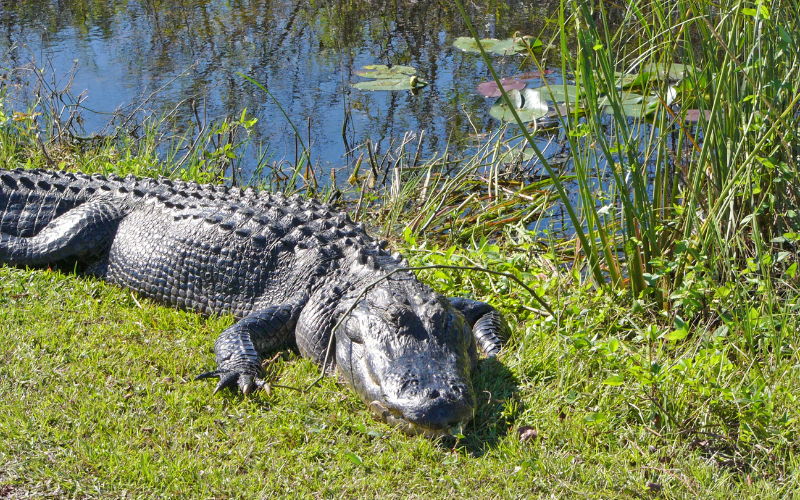
Everglades
Visitors can explore Everglades National Park by canoe or kayak along hundreds of miles of water trails or bike through pine rocklands. For those who want even more adventure, experience a side of the Everglades that most people never see by joining a ranger-led hike called slough slogging where you’ll be waist-deep in the pristine Florida swamp.
Gates of the Arctic
Gates of the Arctic National Park is the most northern national park in the United States. All of the park’s 8,472,506 acres are north of the Arctic Circle. It is also the least visited national park in the United States most years. There are no roads within the park lands, and very few trails. The Dalton Highway passes just to the east of the park; some visitors hike in from there.
Gateway Arch
The arch’s two legs were built separately, and if their measurements were off by as little as 1/64th of an inch, they would not have been able to join at the top. The arch is as tall as it is wide, though it might not look like it. The Gateway Arch is 630 feet tall and 630 feet wide. Since you’re not always looking at the arch straight on, you experience an illusion that it’s much taller than it is wide.
Glacier
Visitors to Glacier National Park can enjoy tours of the park in style in historic red buses called ‘Jammers.’ Originally introduced to U.S. National Parks in the 1930s in an effort to reduce car traffic, this distinctive fleet of coach cars was restored and modified in 2002, with a number converted to run on alternative fuel. Many repeat visitors to the park say their drive along Going-to-the-Sun Road in the vintage Jammer bus with the wind in their hair was the best part!
Glacier Bay
Glacier Bay National Park is larger than the U.S. state of Connecticut. At the same time, it is less than 1% of the total area of Alaska. It’s part of a 25-million acre World Heritage Site—one of the world’s largest international protected areas. The ice that breaks off, or calves, from the tidewater glaciers in Glacier Bay is between 75 and 200 years old.
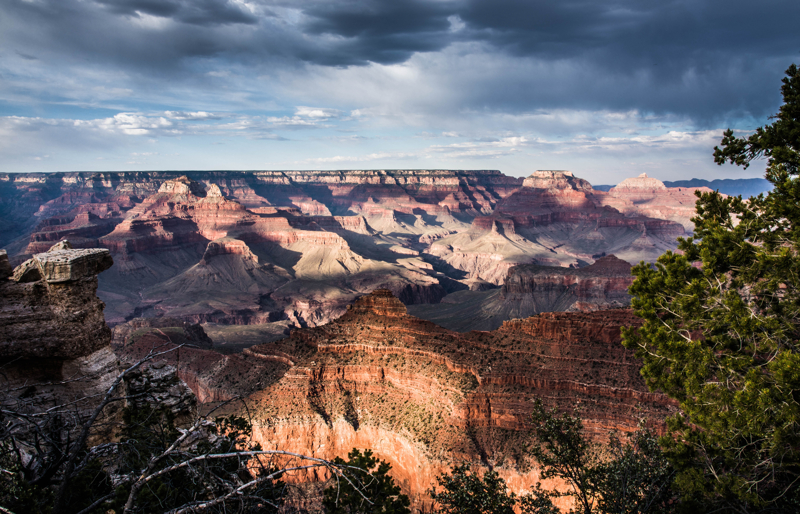
Grand Canyon
There is actually a community that lives full-time at the base of the Grand Canyon. Within the Havasupai Indian Reservation, Supai Village has a population of 208 and is the most remote settlement in the lower 48 states. It’s so off the grid the mail has to be delivered by pack mule – wow!
Grand Teton
Earthquakes formed the 40 mile-long Teton Range found at Grand Teton National Park. The Tetons sit on a fault line, and over millions of years, earthquakes shook the land, causing blocks of land on both sides of the fault to slip past each other. The west block of land rose upward to form the mountains while the east block of land dropped down to form the valley called Jackson Hole. The Tetons are the youngest range in the Rocky Mountains and some of the youngest mountains in the world.
Great Basin
Some of the oldest trees on earth live on the craggy mountain slopes of Great Basin National Park. The rare Great Basin bristlecone pine grows in isolated groves near the tree line, where it can survive for 4,000 years or more under extremely harsh conditions. Much of the landscape at Great Basin National Park was carved by glaciers, and some of them are still here. The Lehman rock glacier – a large mass of boulders cemented together by ice – is visible from the Glacier Trail and the Summit Trail.
Great Sand Dunes
You’ll find Great Sand Dunes National Park in Colorado. It’s home to the tallest sand dunes in North America, soaring about 750 feet in the sky. There’s a little-known secret: the dunes sing! When there’s an avalanche of sand in the area, the sand starts to hum deeply. A fun activity here is to rent a sandboard or sled to ride down the sandy slopes!
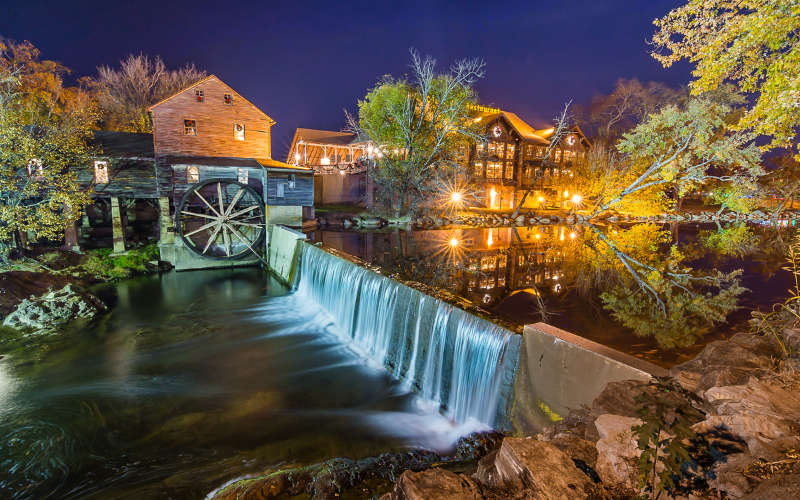
Great Smoky Mountains
Great Smoky Mountains National Park is the most visited national park with more than 9 million guests per year, followed by Grand Canyon National Park, which gets more than 4 million visits per year. The Smoky Mountains are considered the “Salamander Capital of the World”, with 30 different species of salamanders. On any given day in the park, it is safe to assume that the majority of vertebrate animals in the park, including human visitors, are salamanders.
Guadalupe Mountains
The highest peak in Guadalupe Mountains National Park is 8,751 feet, making it the highest point in the entire state of Texas. The Guadalupe Mountains are the same mountains shared with Carlsbad Caverns National Park. That park is about 35 miles northeast by road from the Pine Springs area, via US Highway 180. The New Mexico line is crossed on the way.
Haleakala
Haleakala translates to “House of the Sun”. Viewing the sunrise from the summit of Haleakala is a popular activity. The only native mammals in Haleakala National Park are bats and seals. All other land mammals were brought by man, and many have been highly destructive.
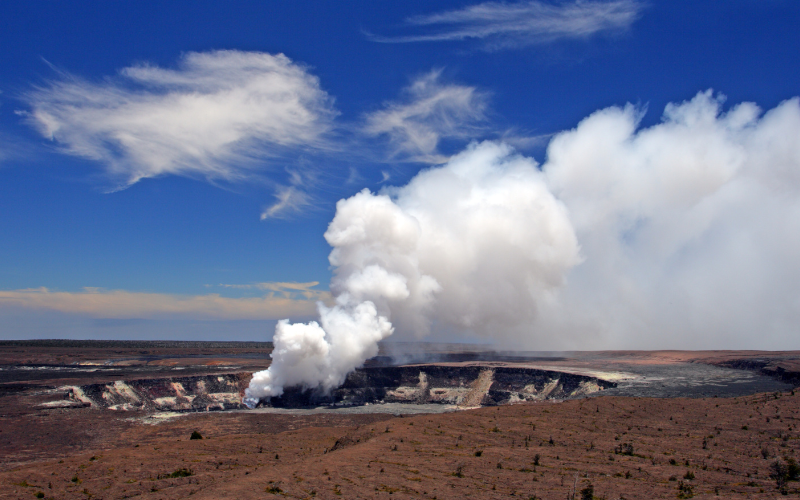
Hawaii Volcanoes
Hawaii Volcanoes National Park has two active volcanoes, Kilauea and Mauna Loa. Kilauea is one of the most active volcanoes in the world. It is monitored by the USGS Hawaiian Volcano Observatory. Mauna Loa is the world’s most massive shield volcano. Mauna Loa erupted as recently as 2020.
Hot Springs
Hot Spring National Park spring water is great for soaking. It’s also completely potable and safe to drink. Each year, thousands of the park’s visitors fill their own bottles, jugs, and mugs to take the water back home, a true testament to its quality. In addition to the two bathhouses where visitors can fully immerse themselves in the water, there are also drinking fountains scattered throughout the property.
Indiana Dunes
Indiana Dunes National Park contains four national natural landmarks and one national historical landmark within its boundaries. There are multiple ecosystems packed into the park: Sand dunes, wetlands, prairie, river, and forest.
Isle Royale
Isle Royale National Park is the only major national park to close entirely for the winter because of the difficulty of travel and hazards of wilderness survival during Michigan’s winters.
Joshua Tree
The Joshua Tree is actually a yucca plant and is in the the same subgroup that includes flowering grasses and orchids. It grows primarily in the Mohave Desert, which includes Joshua Tree National Park. They are a slow mover, growing just 1-3″ per year. Based upon that growth rate, some researchers think that the average lifespan for the tree is 150 years.
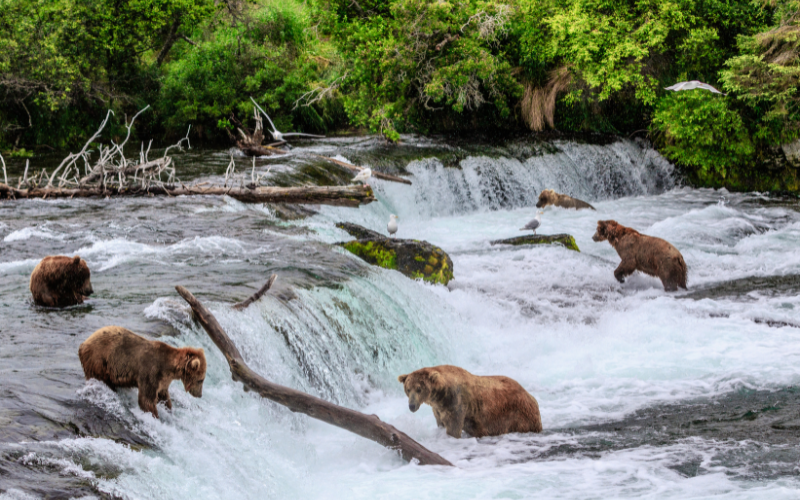
Katmai
The Katmai area is home to about 2,000 grizzly, or brown bears, the largest concentration known. People come from all over the world to visit Katmai National Park for the sole purpose of viewing bears. World famous Brooks Falls is the most popular place to view the bears. The Falls Platform has a limited capacity of 40 people, with limits of one hour at a time on the Falls Platform during the busy summer season.
Kenai Fjords
The park is famous for the fjords it contains, which are valleys that were created by glaciers that are now below sea level. There are three regions at Kenai Fjords National Park: the wilderness (icefield), back-country (fjords), and front-country (Exit Glacier).
Kings Canyon
During World War II Kings Canyon National Park and Sequoia National Park began to be managed together as Sequoia and Kings Canyon National Park – as they adjoin each other and protect much of the same landscape and sequoia trees. Kings Canyon National Park features Kings Canyon, a glacial valley with cliffs, meadows, waterfalls, and a river. The canyon deepens outside the park making it North America’s deepest.
Kobuk Valley
Kobuk Valley National Park lies 25 miles north of the Arctic Circle, joining Gates of the Arctic National Park as the only two U.S. national parks north of that line. Kobuk River Valley has been an important caribou migration crossing for as long as 10,000 years. The caribou that pass through have been hunted to provide food, clothing, and other items important for survival of the people in the area for thousands of years. The only people allowed to hunt in Kobuk Valley National Park are the local residents.
Lake Clark
Lake Clark National Park encompasses mountain ranges, rainforest coastline, an alpine tundra plateau, glaciers, volcanoes, and other features not found in other parks in the state. The park can only be reached by small airplane or by boat as there are no roads to access the park by vehicle.
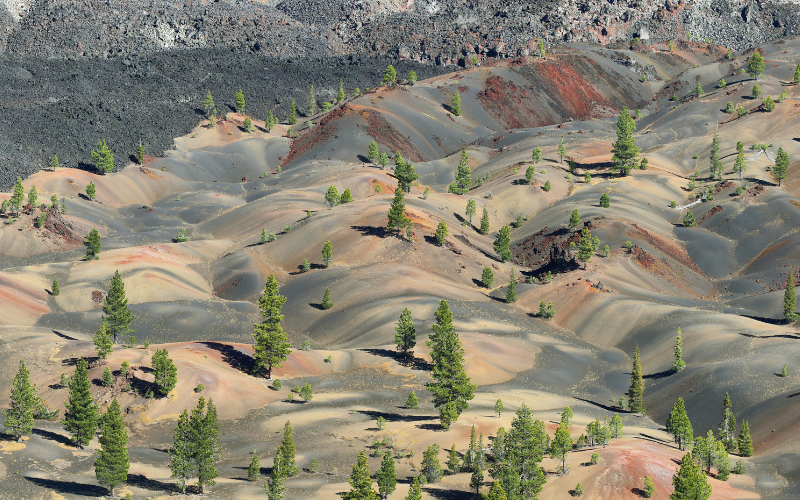
Lassen Volcanic
All four types of volcanoes found in the world can be found in Lassen Volcanic National Park. Those types include shield, plug dome, cinder cone, and composite. The reddish color sometimes observed on top of snow at Lassen Volcanic National Park is a living organism called snow algae.
Mammoth Cave
Mammoth Cave in Kentucky is the world’s longest known cave system, with more than 400 miles explored, and one of the oldest tour attractions in North America. UNESCO decided to officially protect Mammoth Cave National Park as a World Heritage Center in 1981, mainly due to the fact that almost every type of cave formation is present within the site.
Mesa Verde
Mesa Verde is the only national park in the United States created to protect cultural and historical sites rather than natural features. There are more than 4000 archaeological sites and 600 cliff dwellings in Mesa Verde National Park.
Mount Rainier
The highest mountain in the northwestern Cascade Range, Mount Rainier has 25 named glaciers that adorn the mountain, the most of any mountain in the continental United States. Emmons Glacier covers the largest area of any glacier in the contiguous 48 states, stretching over 4 miles.
New River Gorge
The New River Gorge National Park is home to one of the world’s oldest rivers – the New River. The ancient river actually begins in the Blue Ridge Mountains of North Carolina and flows in a south-to-north course (differing from the west-to-east flow of most other major rivers). The New River Gorge Bridge is the fifth-longest single-span arch bridge in the world and the third-highest vehicular bridge in the United States.
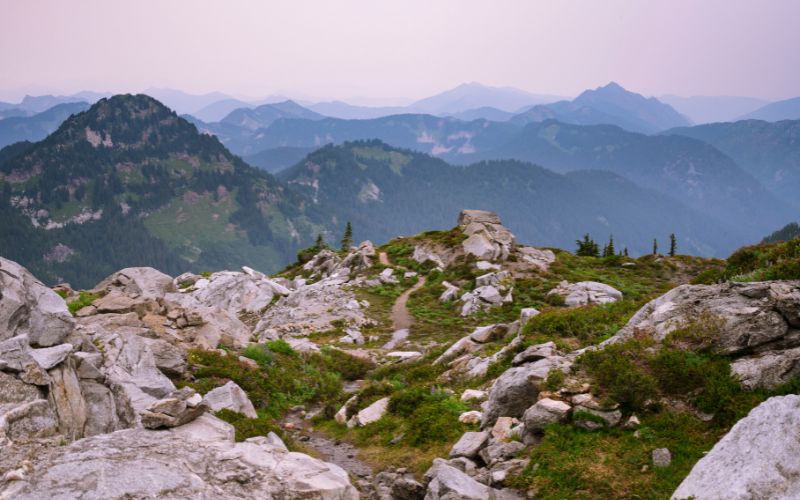
North Cascades
There are over 300 glaciers in the North Cascades Park Complex, more than any other park in the lower 48 states. North Cascades National Park has 78 species of mammals and 18 species of carnivores like cougars, coyotes, deer-like elk, moose, and grizzly bears. Grizzly bears have been named a threatened species. The Interagency Grizzly Bear Committee has made steps to ensure the restoration of grizzlies in the park.
Olympic
At Olympic National Park you can discover hundreds of colorful marine species normally hidden in the ocean. The tidepools uncover a diverse ecosystem filled with anemones, starfish and other creatures. Olympic’s Hoh Rain Forest is one of the few remaining temperate rain forests in the United States, receiving over 12 feet of rain a year!
Petrified Forest
The only national park in the U.S. to contain a portion of the famous and historic Route 66 is Petrified Forest National Park. There are 50,000 acres in the park that will never be developed with roads or trails as it is designated as wilderness. The park is home to 800 important historical or archeological sites.
Pinnacles
You’ll find the uniquely-shaped rock formations resembling an abyss of towers and steeples at Pinnacles National Park. The park also includes underground Talus type caves where a variety of bats can be found. Out of 23 species of bats in California, 14 species live in the park caves.
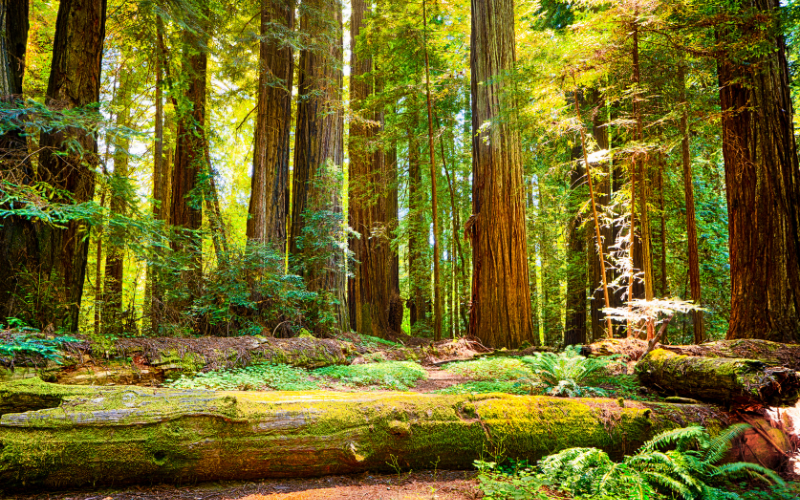
Redwood
The Redwood National and State Parks is a partnership comprised of four parks located in Humboldt and Del Norte Counties, which contain 45% of the remaining old growth Coast Redwoods: Redwood National Park, Prairie Creek Redwoods State Park, Del Norte Coast Redwoods State Park, and Jedediah Smith Redwoods State Park.
Rocky Mountain
Rocky Mountain National Park is one of the highest national parks in the US. The Alpine Visitor Center sits at the highest elevation of all National Park Service sites. Trail Ridge Road crests just over 12,000 feet, making it the highest continuous paved highway in the nation. On the drive you will climb 4,000 feet in a matter of minutes!
Saguaro
Saguaro cacti, despite their great size, are very slow growing. It is estimated that they grow only 1 to 2 inches during the first 8 years of their life. Many signature reptile species are found in Saguaro National Park, including Gila monsters, desert tortoises, western coral snakes, six species of rattlesnakes, and eastern collared and desert spiny lizards.
Sequoia
Sequoia was the first park created to protect a living organism. To protect the giant sequoia trees from logging, Sequoia National Park was established in 1890. Sequoia is home to the tallest mountain in the lower 48. Towering 14,494 feet, Mount Whitney lies on the eastern border of Sequoia National Park and Inyo National Forest.
Shenandoah
Prior to being designated as a national park, part of Shenandoah National Park‘s land was farmland. Because of this there are cemeteries found within the park. After Shenandoah National Park was designated a national park, residents of the area had to move off the land. The exception was for elderly or disabled people. The last resident of the park was Annie Lee Bradley Shank, who died in 1979 at the age of 92.
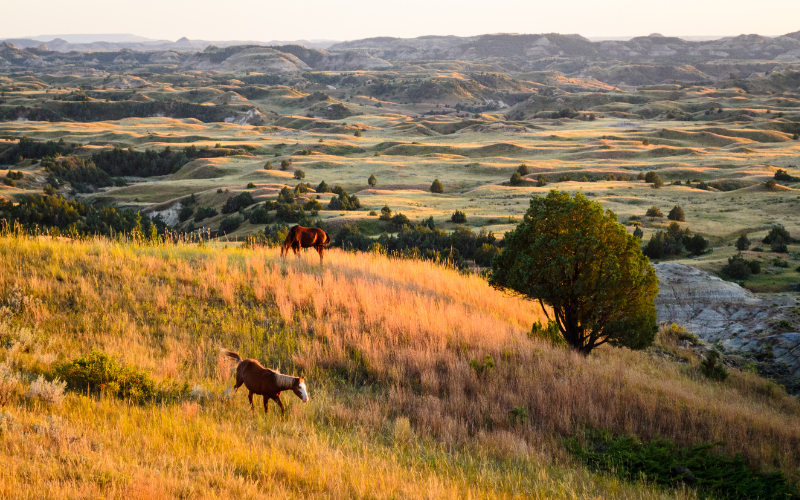
Theodore Roosevelt
It’s fitting that the only U.S. national park to be named for a person is for Theodore Roosevelt. He established the U.S. Forest Service and created five national parks, 150 national forests, 51 federal bird reserves, four national game preserves, and 18 national monuments, totaling more than 230 million acres of protected land. Theodore Roosevelt National Park preserves tens of thousands of acres near his former Elkhorn ranch. “I never would have been President had it not been for my experiences in North Dakota,” he famously wrote.
Virgin Islands
Unlike the rest of the United States, in the U.S. Virgin Islands, vehicles drive on the left side of the road. More than half of the land on the island of St. John lies within the boundaries of Virgin Islands National Park. There is no fresh water source on the island of St. John. All water used is collected from the rain, or trucked in at very high prices.
Voyageurs
‘Voyageur’ is a French word that translates to ‘traveler’ in English. The waterways that flow through Voyageurs National Park were extremely important to the fur trade in the late 1600s and 1700s. Visitors to the park can see evidence of Native Americans who once called the land home. As well as evidence of the fur traders and homesteaders who did logging, fishing, and mining activities in the area.
White Sands
The area is not actually made of sand—it’s a gypsum dune field (the largest of its kind on Earth). The crystals reflect the sun, making them shimmer white to the human eye and feel cool to the touch. In the 1970s, 95 African oryx were imported from the Kalahari Desert to White Sands National Park.
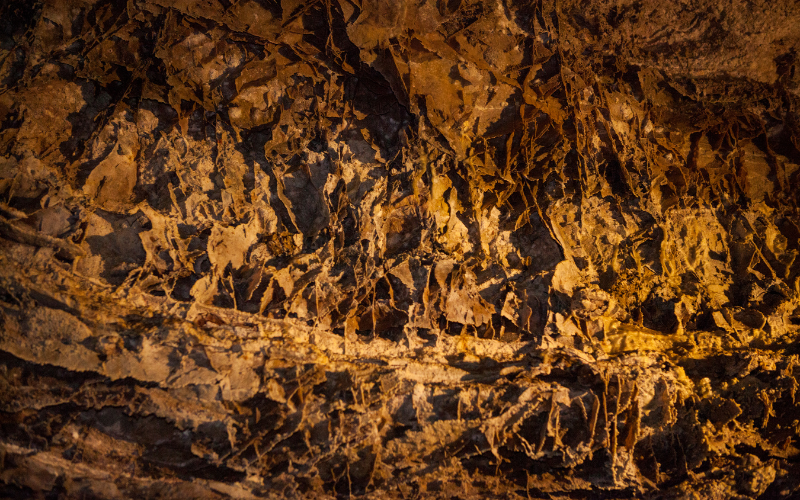
Wind Cave
The caves of Wind Cave National Park are a huge draw for tourists to see the unique honeycomb patterns projecting from the cave. But there are guidelines for visitor safety like wearing proper shoes as the cave floor can be wet and slippery. Those with heart problems, lung or breathing problems, claustrophobia, or recent health problems are advised to avoid exploring the caves.
Wrangell-St. Elias
Wrangell-St. Elias National Park is by far the largest national park in the United States. At over 13 million acres, it is the same size as Yellowstone National Park, Yosemite National Park, and Switzerland combined!. There is a single piedmont glacier, Malaspina, that alone is the size of Yellowstone.
Yellowstone
Yellowstone National Park (in Wyoming, Idaho, and Montana) is the oldest U.S. national park, founded in 1872. It has the largest number of mammal species, its own Grand Canyon, and half the world’s hydrothermal features, including mud pots, geysers, and hot springs.
Yosemite
Three of the 10 highest waterfalls in the world are located in Yosemite National Park in California. Ribbon Falls in Yosemite is nine times taller than Niagara Falls. But one waterfall looks like lava one time each year! At golden hour in mid- to late-February, Horsetail Fall in Yosemite National Park is transformed. The way the sun’s rays hit the cascade, it looks like a fiery lava flow off the side of a cliff.
Zion
One of the Zion National Park facts is about it’s name. It’s an ancient Hebrew word for sanctuary or refuge. The Zion Canyon was carved over millions of years by the Virgin River and is approximately 2,000 feet deep. There are many hiking opportunities at Zion National Park, the two most popular being Angel’s Landing and The Narrows.
CLICK TO SHOP FOR US NATIONAL PARK GUIDES & MAPS
National Park Packing List
We have been visiting US National Parks for over 20 years. Our number one tip is to be prepared for the temperatures and weather for the time you’ll be visiting a specific park.
Use our US National Park Packing List to make sure you have the right clothing and gear for visiting in any time of year! Grab your free printable packing checklist by clicking the image below!

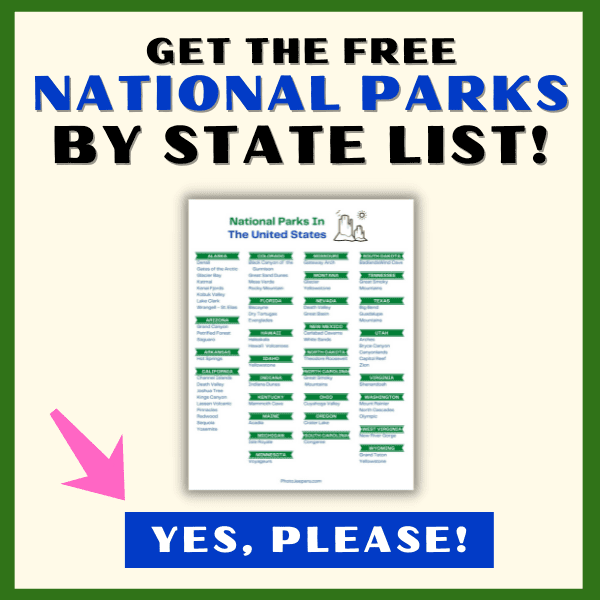
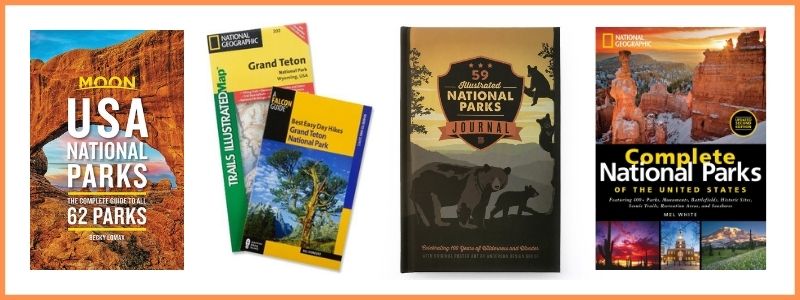
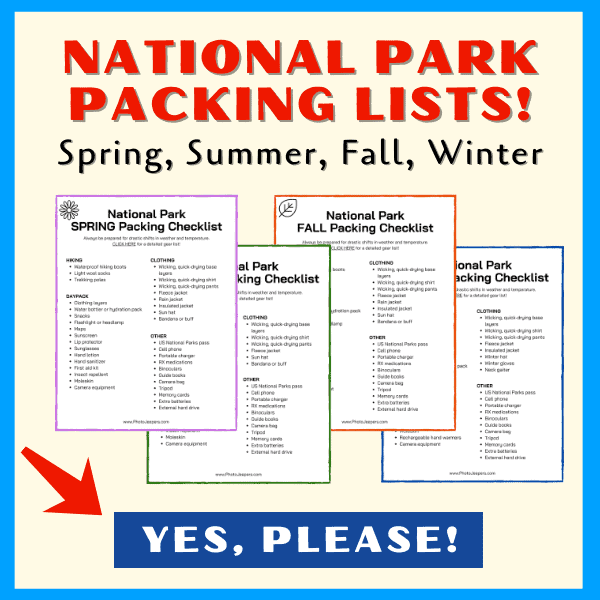
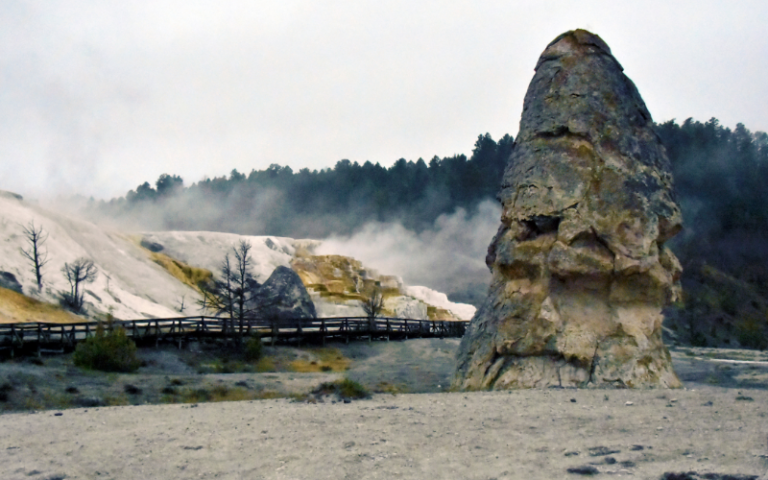
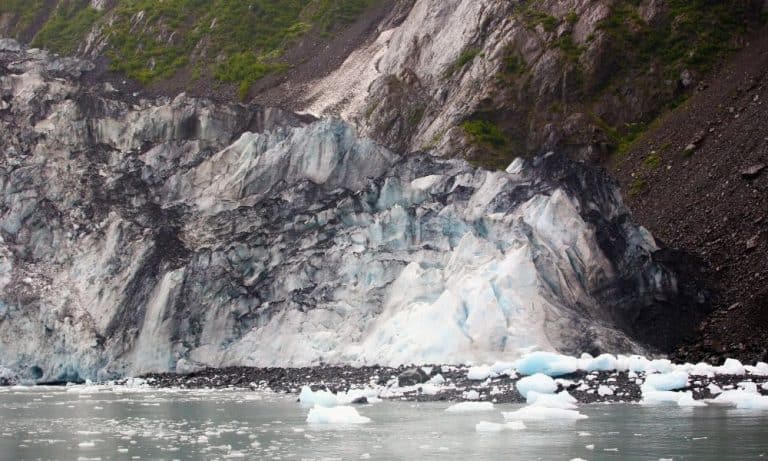
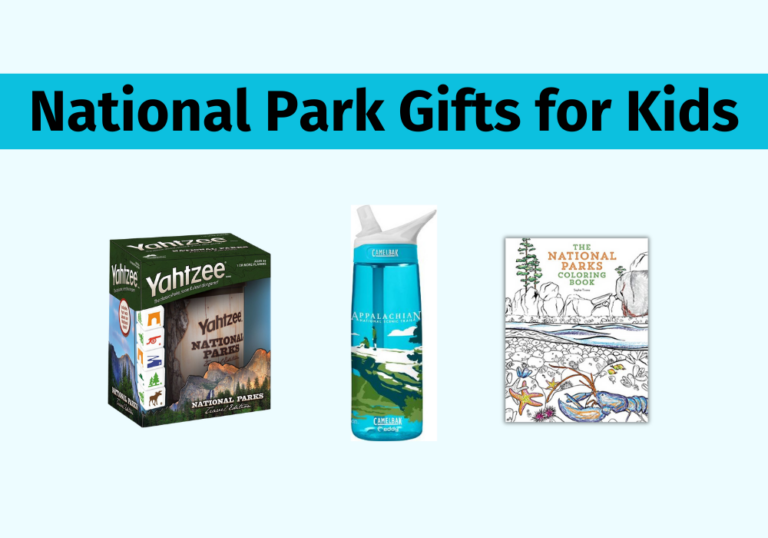
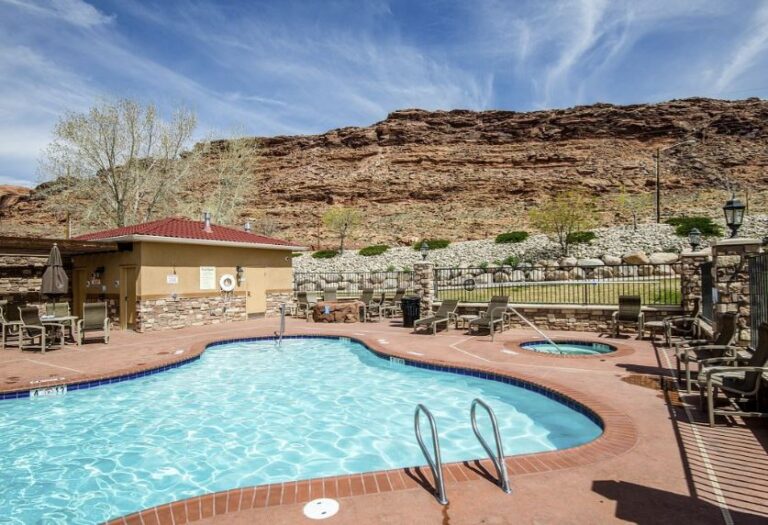
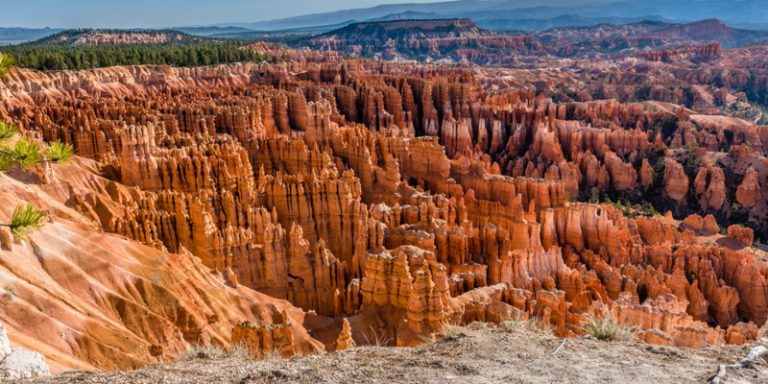
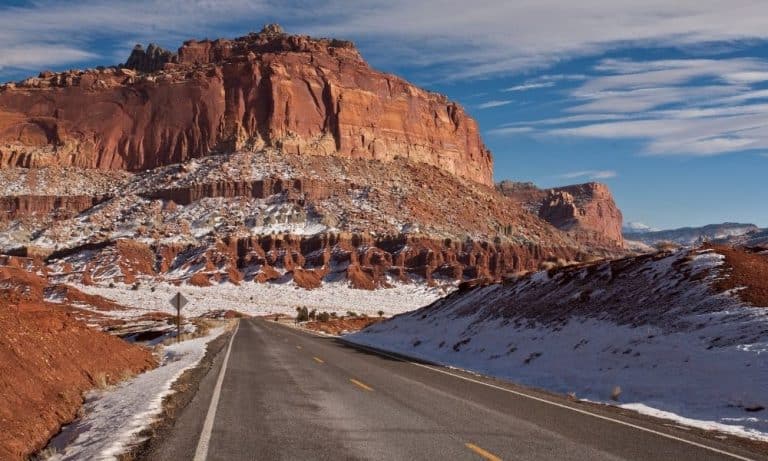
Thank you for sharing all this great information. We love visiting many different places here we are we live in a national forest and have many parks. come visit our blog at http://shopannies.blogspot.com
This was a lot of fun to read! We’ve just started visiting national parks in the last couple of years and really enjoy how unique they all are.
What an amazing picture of the arches – wow, would love to see that in person.
Thank you for sharing your links with us at #273 SSPS Linky. See you again next week.
Wonderful post! I also love the National Parks and have visited many over the years. A good thing to remember is that many now require a times reservation be made prior to arriving. Often there is no wifi near a park and the reservation must be made ahead of time.
So true – it’s always best to check each park’s website for the most updated information. Thank you for helping us all remember that!